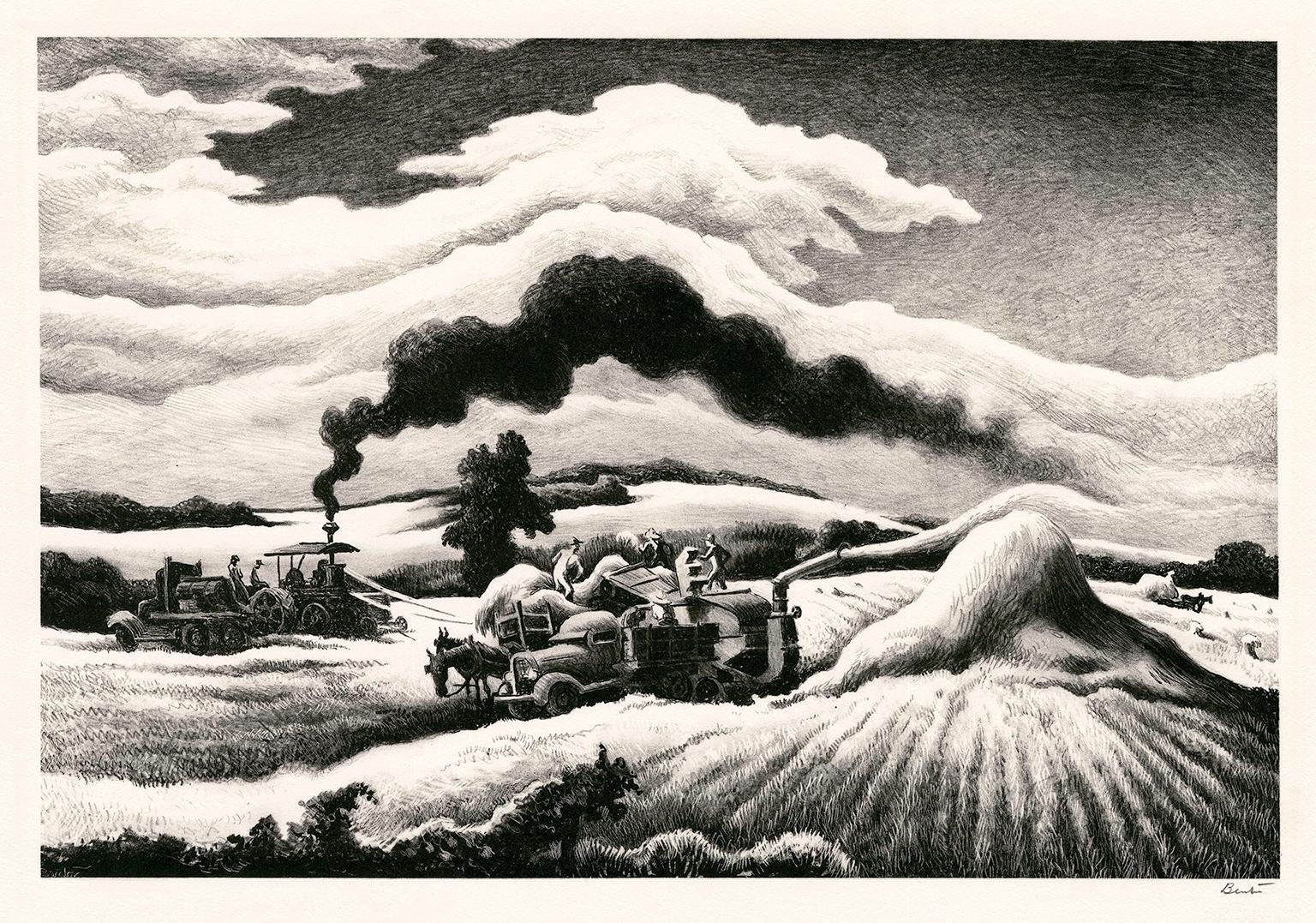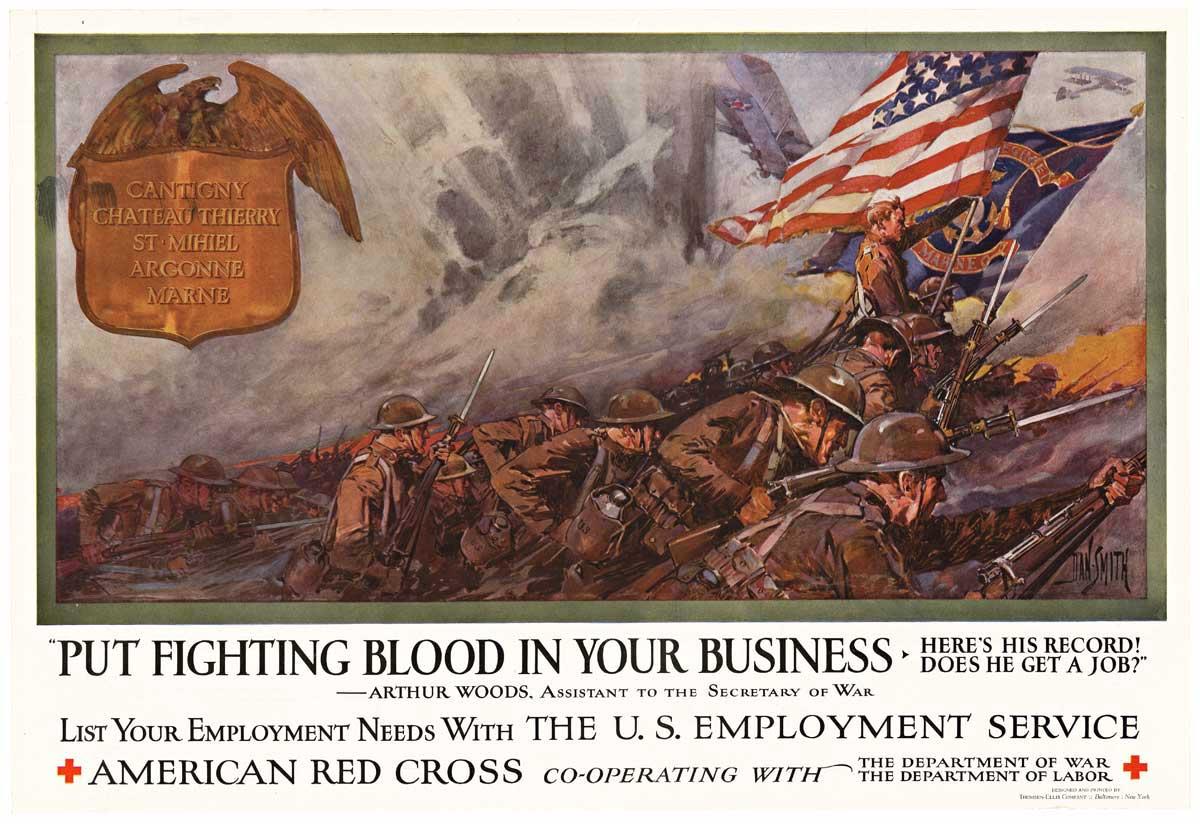Items Similar to Cowboys & Indians, Warrington Colescott
Want more images or videos?
Request additional images or videos from the seller
1 of 8
Warrington ColescottCowboys & Indians, Warrington Colescott1969
1969
About the Item
WARREN COLESCOTT (1921-2018) An American artist best known for his satirical Etchings. Working in that area which he calls that black zone between tragedy and high comedy, where with a little pull or push one way or the other you can transmute screams into laughter, Colescott examines the society of today, its virtues and its inequities. To strengthen satire, he juxtaposes humor and violence; to reinforce a comment on a current situation, he makes use of historical reference. The humor is bittersweet; the images are thought-provoking, the quality of the printmaking is outstanding.
Original Limited Edition Lithograph on paper, 1969. Edition Size: 75. Paper Size: 31" x 23." Signed, titled & dated, and numbered in pencil. Excellent Condition; never framed or matted.
- Creator:Warrington Colescott (1921, American)
- Creation Year:1969
- Dimensions:Height: 31 in (78.74 cm)Width: 23 in (58.42 cm)
- Medium:
- Movement & Style:
- Period:
- Condition:
- Gallery Location:Auburn Hills, MI
- Reference Number:1stDibs: LU1465210086022
About the Seller
4.9
Gold Seller
These expertly vetted sellers are highly rated and consistently exceed customer expectations.
Established in 2002
1stDibs seller since 2021
860 sales on 1stDibs
Typical response time: <1 hour
More From This SellerView All
- Three Graces, Marino MariniBy Marino MariniLocated in Auburn Hills, MIMARINO MARINI (1901-1980) One of Italy’s most celebrated sculptors of the 20th century, Marino Marini primarily produced figurative bronze sculptures, though his practice also includ...Category
1970s Post-Impressionist Figurative Prints
MaterialsLithograph
- 69 Skid Row, Robert IndianaBy Robert IndianaLocated in Auburn Hills, MIROBERT INDIANA (1928-2018) Indiana's work has evolved into hard-edged graphic images of words, logos and typographic forms, earning him a reputation as one of the country's leading c...Category
1970s Pop Art Figurative Prints
MaterialsLithograph
- Picasso, Le Goût du Bonheur 50 (Cramer 148; Bloch 2013) (after)By Pablo PicassoLocated in Auburn Hills, MILithograph and Silkscreen with grease crayon, lithographic tusche, lead pencil, and charcoal on vélin d'Arches paper. Inscription: Unsigned and unnumbered, as issued. Good condition;...Category
1970s Cubist Figurative Prints
MaterialsLithograph
- Picasso, Le Goût du Bonheur 30 (Cramer 148; Bloch 2013) (after)By Pablo PicassoLocated in Auburn Hills, MILithograph and Silkscreen with grease crayon, lithographic tusche, lead pencil, and charcoal on vélin d'Arches paper. Inscription: Unsigned and unnumbered, as issued. Good condition;...Category
1970s Cubist Figurative Prints
MaterialsLithograph
- Soleil sur la Vagues (Red Sun Above the Waves), Alexander CalderBy Alexander CalderLocated in Auburn Hills, MIALEXANDER CALDER (1898-1976) Credited with the invention of the mobile, Alexander Calder revolutionized twentieth-century art with his innovative use of subtle air currents to animat...Category
1970s Modern Landscape Prints
MaterialsLithograph
- Picasso, Toros Y Toreros (G&C 112; Bloch 1014-1017; Freitag 7495) (after)By Pablo PicassoLocated in Auburn Hills, MIOriginal Limited Edition Duotone on Vellum Paper. Edition: 1500, plus proofs. Paper Size: 14.75 x 10.5 inches. Inscription: Unsigned and unnumbered, as issued. Catalogue Raisonne...Category
1960s Cubist Figurative Prints
MaterialsLithograph
You May Also Like
- HyrdofoilBy Raymond LoewyLocated in Long Island City, NYArtist: Raymond Loewy, American (1893 - 1986) Title: Hydrofoil Year: 1978 Medium: Lithograph, signed and numbered in pencil Edition: 300 Image Size: 17 x 24 inches Size: 21 in. x 28 ...Category
1970s American Realist Figurative Prints
MaterialsLithograph
- 'Threshing' — 1940s American RegionalismBy Thomas Hart BentonLocated in Myrtle Beach, SCThomas Hart Benton, 'Threshing', lithograph, 1941, edition 250, Fath 48. Signed in pencil. Signed in the stone, lower left. A fine, richly-inked impression, on off-white, wove paper, with full margins (1 3/8 to 1 5/8 inches), in excellent condition. Published by Associated American Artists. Image size 9 5/16 x 13 13/16 inches (237 x 351 mm); sheet size 12 1/2 x 16 5/8 inches (318 x 422 mm). Archivally matted to museum standards, unframed. Impressions of this work are held in the following museum collections: Art Institute of Chicago, Fine Arts Museums of San Francisco, High Museum of Art, McNay Art Museum, Montgomery Museum of Fine Arts, and Nelson-Atkins Museum of Art. ABOUT THE ARTIST “Benton’s idiom was essentially political and rhetorical, the painterly equivalent of the country stump speeches that were a Benton family tradition. The artist vividly recalled accompanying his father, Maecenas E. Benton — a four-term U.S. congressman, on campaigns through rural Missouri. Young Tom Benton grew up with an instinct for constituencies that led him to assess art on the basis of its audience appeal. His own art, after the experiments with abstraction, was high-spirited entertainment designed to catch and hold an audience with a political message neatly bracketed between humor and local color.” —Elizabeth Broun “Thomas Hart Benton: A Politician in Art,” Smithsonian Studies in American Art, Spring 1987, p. 61 Born in 1889 in Neosho, Missouri, Benton spent much of his childhood and adolescence in Washington, D.C., where his lawyer father, Maecenas Eason Benton, served as a Democratic member of Congress from 1897 to 1905. Hoping to groom him for a political career, Benton’s father sent him to Western Military Academy. After nearly two years at the academy, Benton convinced his mother to support him through two years at the Art Institute of Chicago, followed by two more years at the Academie Julian in Paris. Benton returned to America in 1912 and moved to New York to pursue his artistic career. One of his first jobs was painting sets for silent movies, which were being produced in Fort Lee, New Jersey. Benton credits this experience with giving him the skills he needed to make his large-scale murals. When World War I broke out, Benton joined the Navy. Stationed in Norfolk, Virginia, he was assigned to create drawings of the camouflaged ships arriving at Norfolk Naval Station. The renderings were used to identify vessels should they be lost in battle. Benton credited being a ‘camofleur’ as having a profound impact on his career. “When I came out of the Navy after the First World War,” he said, “I made up my mind that I wasn’t going to be just a studio painter, a pattern maker in the fashion then dominating the art world–as it still does. I began to think of returning to the painting of subjects, subjects with meanings, which people, in general, might be interested in.” While developing his ‘regionalist’ vision, Benton also taught art, first at a city-supported school and then at The Art Students League (1926–1935). One of his students was a young Jackson Pollock, who looked upon Benton as a mentor and a father figure. In 1930, Benton was commissioned to paint a mural for the New School for Social Research. The ‘America Today’ mural, now on permanent exhibit at the Metropolitan Museum of Art, was followed by many more commissions as Benton’s work gained acclaim. The Regionalist Movement gained popularity during the Great Depression of the 1930s. Painters, including Benton, Grant Wood, and John Steuart Curry, rejected modernist European influences preferring to depict realistic images of small-town and rural life—reassuring images of the American heartland during a period of upheaval. Time Magazine called Benton 'the most virile of U.S. painters of the U.S. Scene,' featuring his self-portrait on the cover of a 1934 issue that included a story about 'The Birth of Regionalism.' In 1935, Benton left New York and moved back to Missouri, where he taught at the Kansas City Art Institute. Benton’s outspoken criticism of modern art, art critics, and political views alienated him from many influencers in political and art scenes. While remaining true to his beliefs, Benton continued to create murals, paintings, and prints of some of the most enduring images of American life. The dramatic and engaging qualities of Benton’s paintings and murals attracted the attention of Hollywood producers. He was hired to create illustrations and posters for films, including his famous lithographs for the film adaptation of John Steinbeck’s ‘Grapes of Wrath’ produced by Twentieth Century Fox. Benton’s work can be found at the Art Institute of Chicago, High Museum of Art, Fine Arts Museums of San Francisco, Library of Congress, McNay Art Museum, Metropolitan Museum of Art, Minneapolis Institute of Arts, Montgomery Museum of Fine Arts, National Gallery of Art, Nelson-Atkins Museum of Art, Smithsonian American Art Museum, Whitney Museum of American Art, The Truman Library and many other museums and galleries across the US. He was elected to the National Academy of Design, has illustrated many books, authored his autobiography, and is the subject of ‘Thomas Hart Benton,’ a documentary by Ken Burns.Category
1940s American Realist Figurative Prints
MaterialsLithograph
- Skiing, World Cup, Lithograph by Jim JonsonBy Jim JonsonLocated in Long Island City, NYUS World Cup Skiing Jim Jonson, American (1928–1999) Date: 1977 Lithograph, signed and numbered in pencil Edition of 300, AP Image Size: 18 x 25 inches Size: 22 in. x 30 in. (55.88 c...Category
1970s American Realist Landscape Prints
MaterialsLithograph
- Original Windsor, See Britain by Train vintage posterBy Gordon NicollLocated in Spokane, WAOriginal Windsor See Britain by Train vintage railroad poster. Linen backed in very fine condition, ready to frame. No restoration to t...Category
1950s American Realist Landscape Prints
MaterialsLithograph
- Original Learn to Make and Test Big Guns vintage World War 1 posterLocated in Spokane, WA"Learn to Make and Test the Big Guns" original vintage poster: linen backed. Grade A condition. Ordnance recruiting poster No. 2. Better yourself – Enlist and learn a Trade in the Ordnance Department U.S.A. Linen-backed, horizontal, fine condition. A rare original poster. Aberdeen Proving Ground …. Daily peacetime firing. Publisher: Washington, D.C.: Engineer Reproduction Plant, U.S. Army, 1919. OCLC: 51040606 The recruiting and training of artillery units were crucial to American victory in World War I. For the Saint-Mihiel offensive, General Pershing...Category
1910s American Realist Landscape Prints
MaterialsLithograph
- Put Fighting Blood in Your BusinessLocated in Spokane, WAOriginal WW1 poster. Put Fighting Blood in Your Business. Here’s his record! Does he get a Job? Arthur Woods, Assistant to the Secretary of...Category
1910s American Realist Landscape Prints
MaterialsLithograph
Recently Viewed
View AllMore Ways To Browse
Prints Of Indians
Indian Print
Vintage Humor
Vintage Indian Sign
Vintage Indian Signs
American Indian Prints
Prints Of American Indians
Cowboys And Indians
Cowboy Indian
Cowboy And Indian Art
Vintage Indian Art Prints
American Indian Art Prints
Vintage Indian Images
Indian Lithograph
Vintage American Indian Prints
Indian Pencil
Vintage Satire
Cowboys And Indians Vintage




